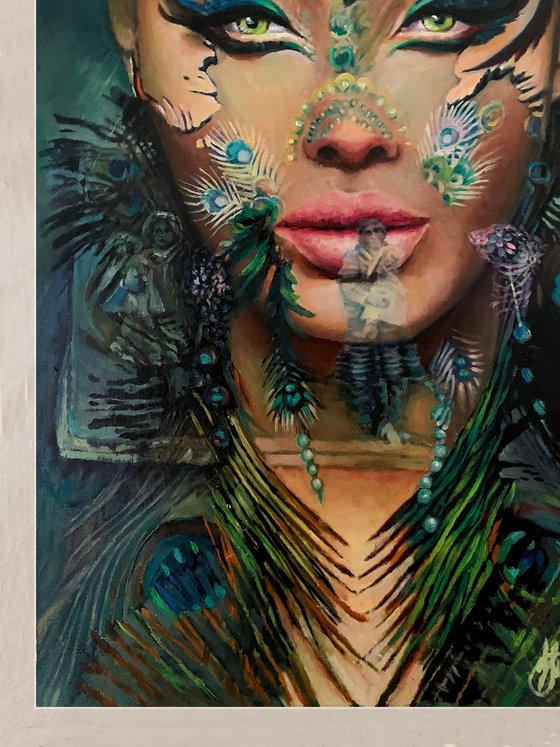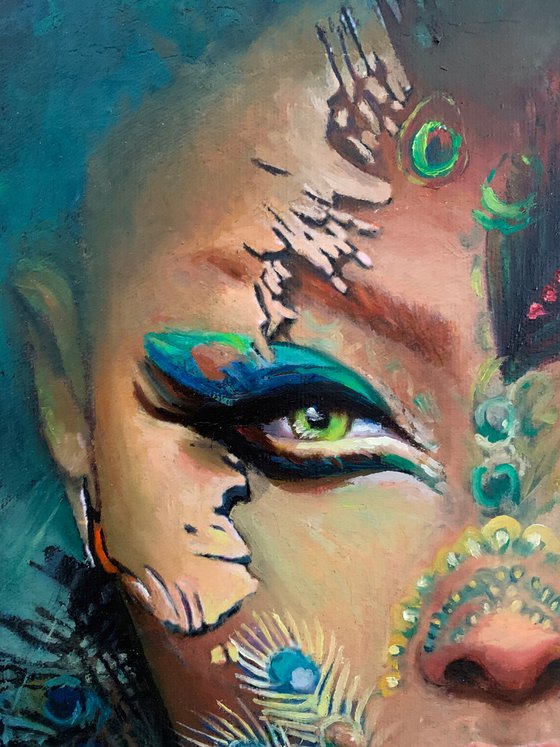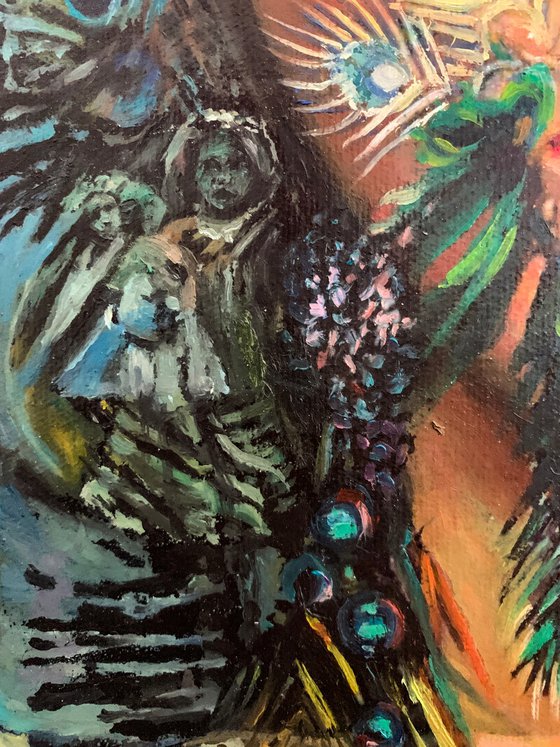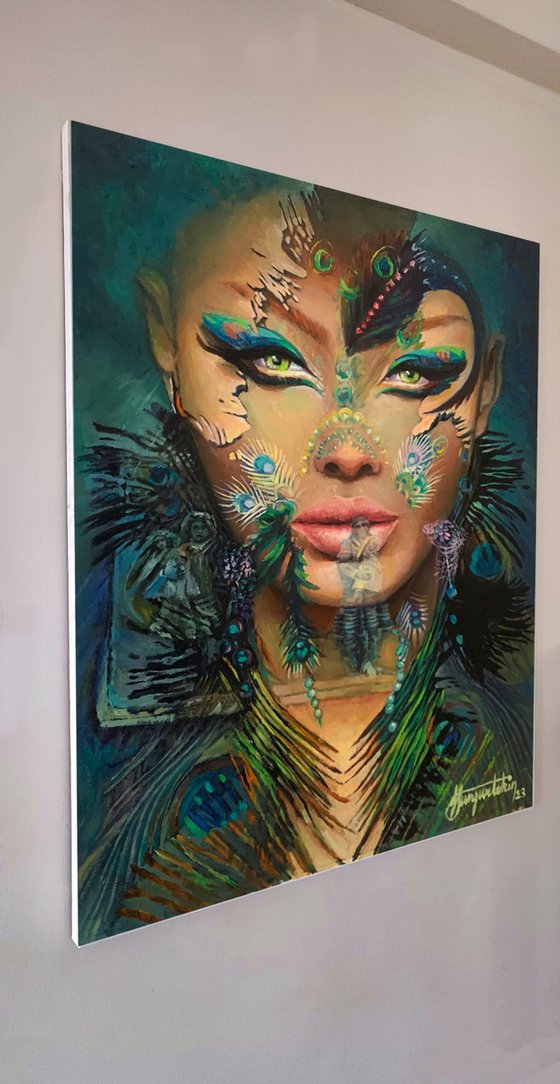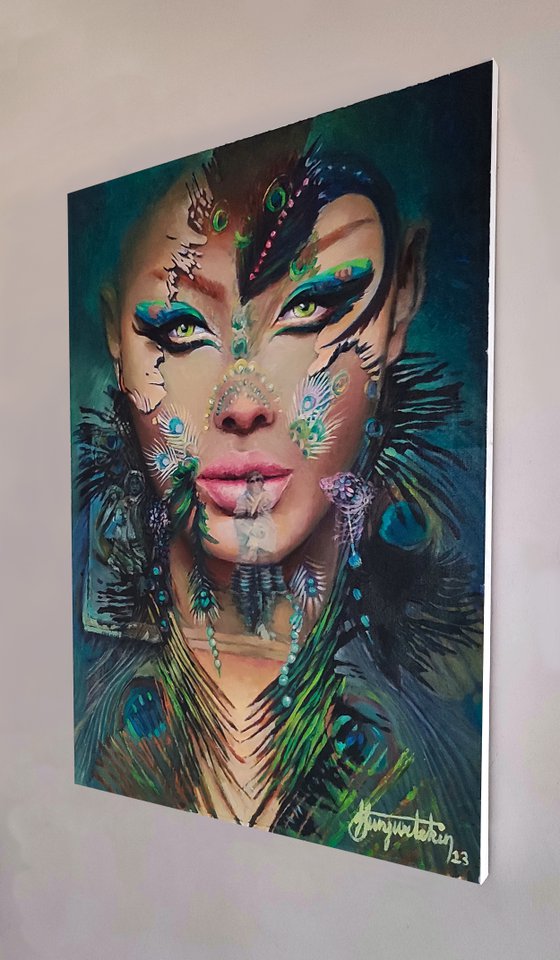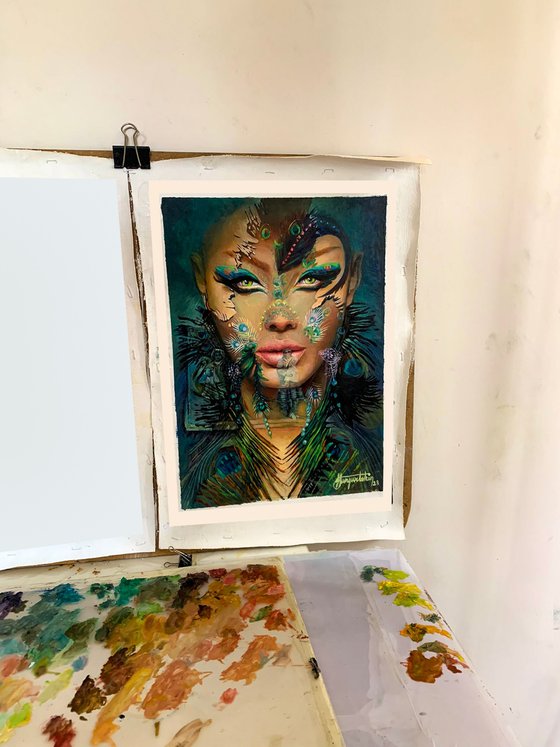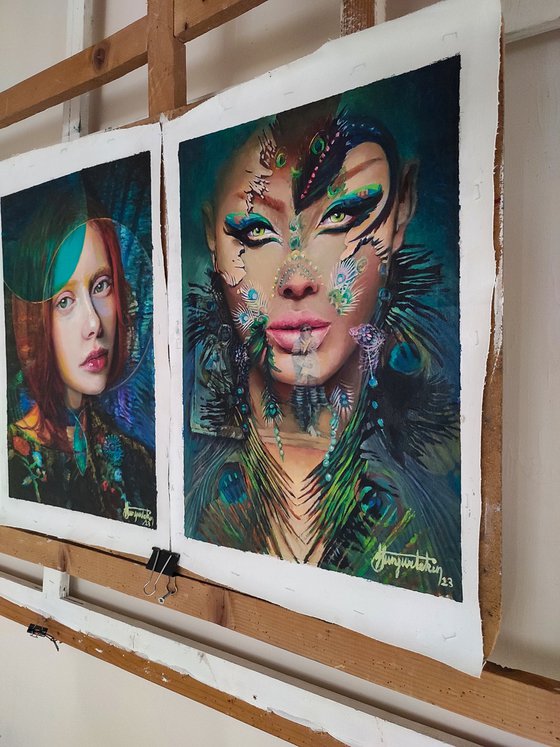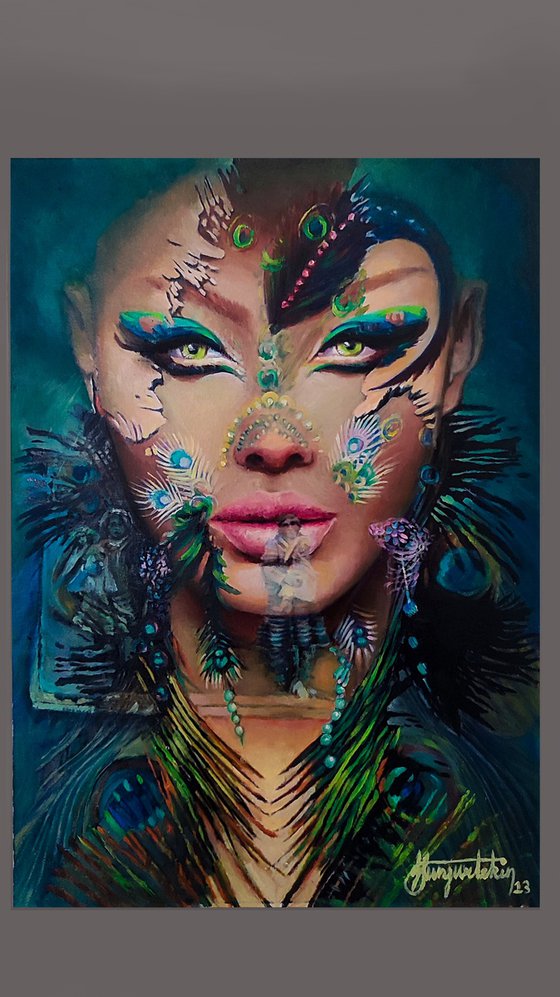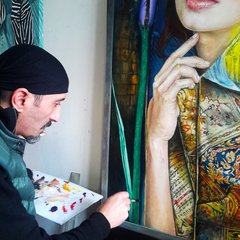Original artwork description:
The artist had made a series of installations consisting of postcards that could not reach their owners. In one of these works, he used a postcard with a photograph of a Native American family. He drew parallels with social amnesia between the disappearance of the tribesmen and the postcard. Social memory consists of memories lived in that period and accumulated layer by layer. But as other societies or new generations create new memories, memories of the past begin to fade. Memory is concerned with how a person perceives, interprets and stores information. Our mental information also disappears over time unless it is used, and this is similar to social memory. Erased memories leave traces both in society and in the individual.
The artist discovers the Rorschach test, which analyzes people’s psychology by analogy using ink blots in the past, based on these traces. The Rorschach test, developed for the treatment of psychological disorders, has been used for many years to detect the psychological problems of the person. Test gives informations about what and how the person’s memory perceives. The test is named after its creator, Swiss psychiatrist Hermann Rorschach. The artist compares one of these test images to a bat and butterfly and applies it to the model’s face. He emphasizes the psychological traces formed in the mind of the person with the image of Rorschach.
The artist, who also connects with social traces, makes use of the Peacock, which is one of the symbols in Shamanism, on the basis of Turkish mysticism.
The peacock, which is located on the right and left of the tree of life, which is frequently seen in Anatolian Seljuk tiles, is an attractive bird that symbolizes freedom. It is known that peacock feathers represent protective spirits and are used as elements in Shamanism. He establishes cultural and mystical similarities between the Native American figures he uses in his work and Shamanism. He includes sections of the past traces in his painting as a postcard memory that has been erased from the social memory. With the colors he uses in his painting and the feathers of the peacock, he strengthens the expression of the shamanic figure and adds a meaning that appeals to the healing and liberating spirit.
In this work, the artist creates his painting in a layered and intricate manner by making connections from the past and present between the Rorschach test card, the postcard square and the peacock.
Materials used:
oil
Tags:
#native american history #shamanic figure #turkish mysticism #shamanism culture #psychiatristsRorschach (2023)
Oil painting
by Fatih Sungurtekin
1 Artist Reviews
£1,196.28
- Oil painting on Canvas
- One of a kind artwork
- Size: 29 x 42 x 2cm (unframed) / 29 x 42cm (actual image size)
- Ready to hang
- Signed on the front
- Style: Photorealistic
- Subject: People and portraits
Original artwork description
The artist had made a series of installations consisting of postcards that could not reach their owners. In one of these works, he used a postcard with a photograph of a Native American family. He drew parallels with social amnesia between the disappearance of the tribesmen and the postcard. Social memory consists of memories lived in that period and accumulated layer by layer. But as other societies or new generations create new memories, memories of the past begin to fade. Memory is concerned with how a person perceives, interprets and stores information. Our mental information also disappears over time unless it is used, and this is similar to social memory. Erased memories leave traces both in society and in the individual.
The artist discovers the Rorschach test, which analyzes people’s psychology by analogy using ink blots in the past, based on these traces. The Rorschach test, developed for the treatment of psychological disorders, has been used for many years to detect the psychological problems of the person. Test gives informations about what and how the person’s memory perceives. The test is named after its creator, Swiss psychiatrist Hermann Rorschach. The artist compares one of these test images to a bat and butterfly and applies it to the model’s face. He emphasizes the psychological traces formed in the mind of the person with the image of Rorschach.
The artist, who also connects with social traces, makes use of the Peacock, which is one of the symbols in Shamanism, on the basis of Turkish mysticism.
The peacock, which is located on the right and left of the tree of life, which is frequently seen in Anatolian Seljuk tiles, is an attractive bird that symbolizes freedom. It is known that peacock feathers represent protective spirits and are used as elements in Shamanism. He establishes cultural and mystical similarities between the Native American figures he uses in his work and Shamanism. He includes sections of the past traces in his painting as a postcard memory that has been erased from the social memory. With the colors he uses in his painting and the feathers of the peacock, he strengthens the expression of the shamanic figure and adds a meaning that appeals to the healing and liberating spirit.
In this work, the artist creates his painting in a layered and intricate manner by making connections from the past and present between the Rorschach test card, the postcard square and the peacock.
Materials used:
oil
Tags:
#native american history #shamanic figure #turkish mysticism #shamanism culture #psychiatristsReturns and refunds
We want you to love your art! If you are not completely satisfied with your purchase you can return it free within 14 days, no questions asked. Learn more
Artist Reviews (1)
This artwork is sold by Fatih Sungurtekin from Türkiye

